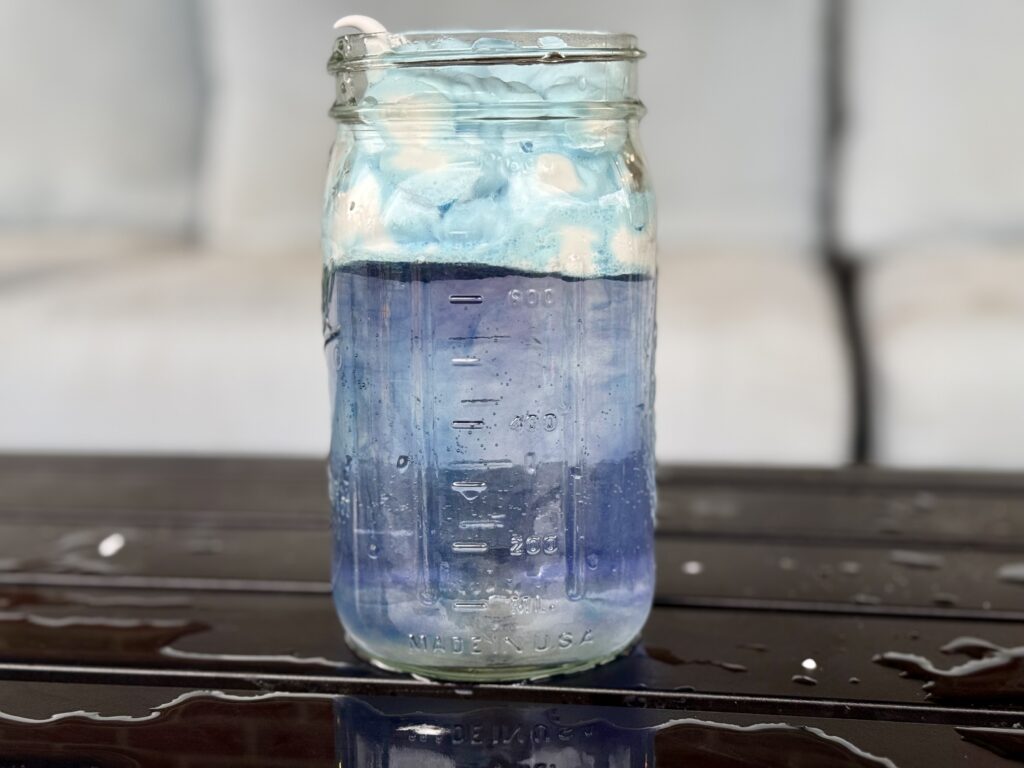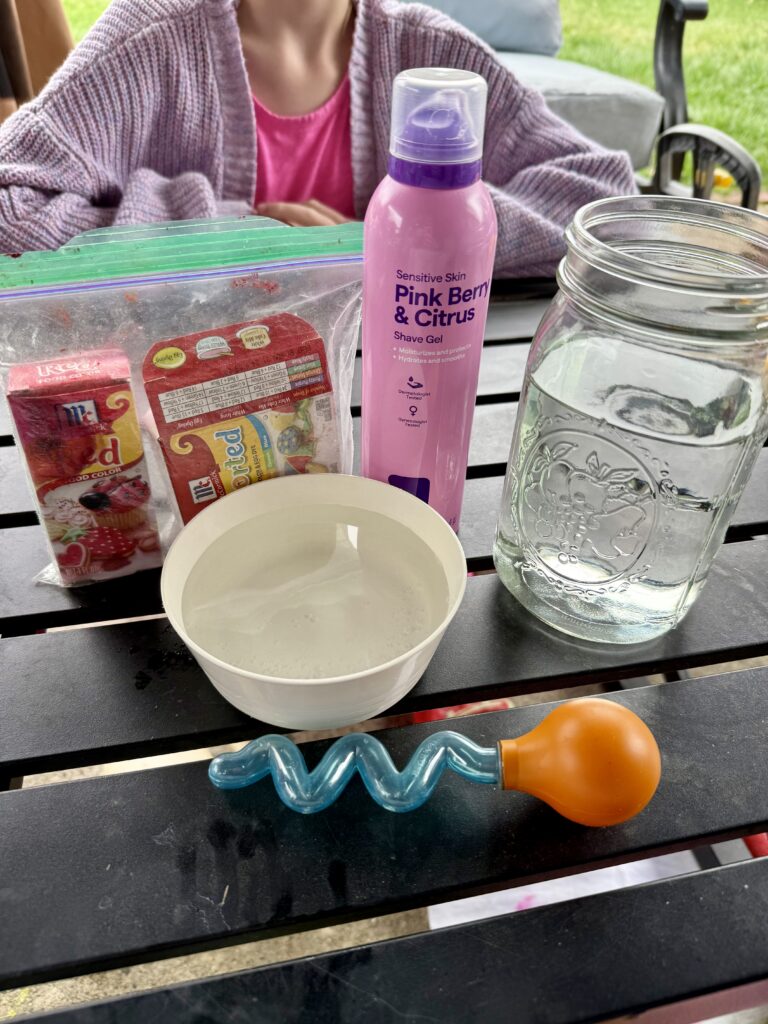April Showers… to kick off the start of April today, we decided to make a Rain Cloud in a Jar! This is such a fun experiment. This experiment truly mimics how clouds fill with water and what happens once the clouds are too full. It helps to explain in a visual way, why we get rain. As the first day of April, it true form, we are expected to get some showers but the morning started out nice a sunny so we did our experiment outside.

Rain Cloud in a Jar
This is such a fun and simple activity. You truly do not need very many supplies for this experiment and likely you many of them on hand at home already.

Supplies
- Glass container
- Food coloring
- Shaving cream
- Water
- Dropper (we use the dropper from this tool set, we use the rest of the tools all the time)
- Oil (optional)
- We did not have baby oil on hand, so we ended up using cooking oil.
How to Make a Rain Cloud in a Jar
- Fill the mason jar about 3/4 of the way full with water.
- Place a layer of shaving cream on top to create the effect of a cloud.
- In a separate container, add some blue food coloring to water.
- Mix until combined
- Squirt the blue water onto the shaving cream.
- Wait to see the magic unfold!
Saturation of a Rain Cloud
Within the jar, the shaving cream represents a cloud. The water under the cloud in the jar represents the air. The colored water represents the rain. When you add the colored water to the cloud, it starts to saturate the cloud. When the cloud becomes too full, the cloud cannot hold anymore water. Finally, when this happens, the colored water will seep through the cloud and into the air. Just as real rain falls when a cloud becomes too saturated. This experiment was a fun way to talk about the weather and changes that happen to make it rain.
Expanding The Science Behind the Rain Cloud
Water with Water
Initially, we choose to do the rain cloud experiment with water into water. What we found is that instead of forming what we expected to be raindrops, it was more of a seeping of rain water. When we did our experiment in the winter for the snowstorm, my kids were enthralled with the way the snow formed. This time, the food coloring did kind of drip but it did not make droplets. So we talked about the differences in the experiments and how density may have played a role.
Water with Oil
So, we switched it up. This time, we did not have any baby oil on hand but cooking oil works just the same. The major difference is that it typically has a yellow appearance instead of clear. Again, we talked about density and the ability to mix. Water and oil are immersible, meaning they cannot be mixed. Water is also more dense than oil. So when mixing items, the more dense or “heavier” a liquid, the more it will sink. So in this situation, we dyed the water blue to look like rain and it sinks to the bottom of the jar.
If you enjoy science experiments, come check out a photosensitivity reaction we did this fall, can be replicated nicely with items blooming in the spring! Also, here is another experiment in a jar.
